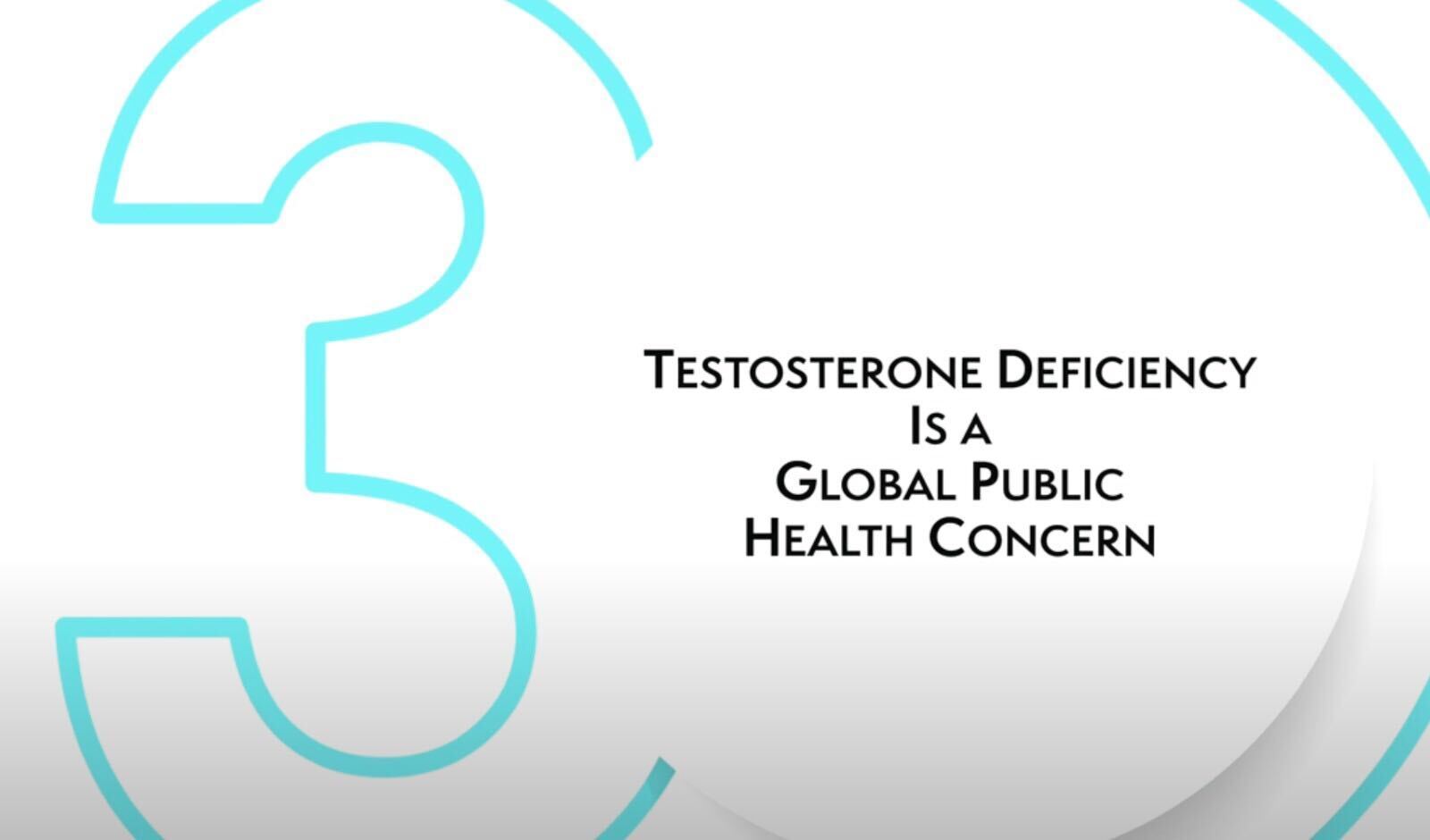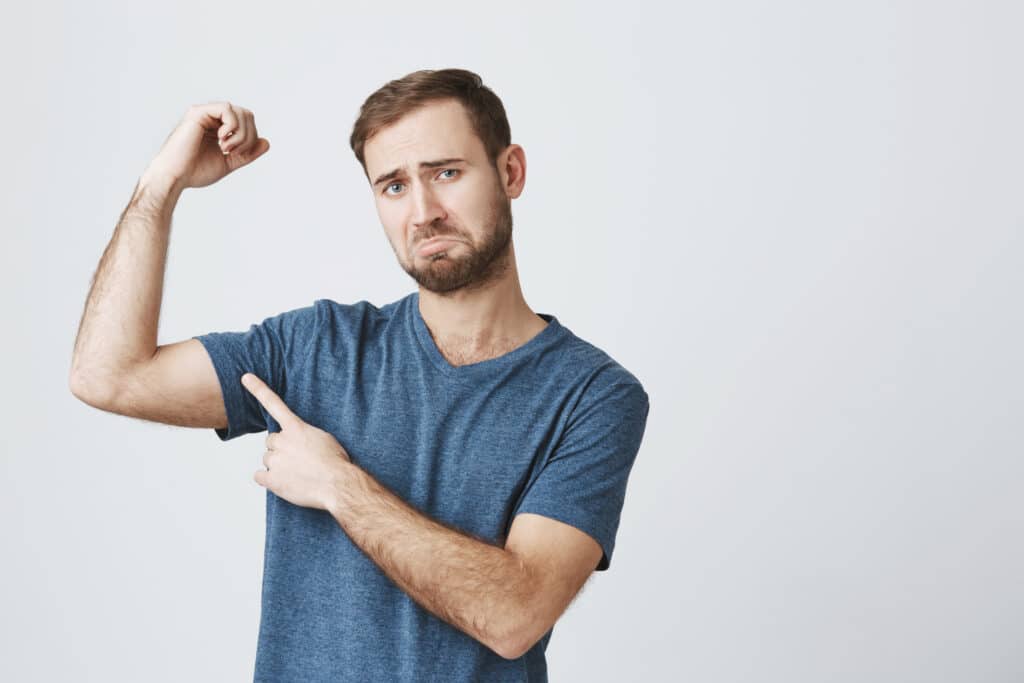Testosterone Optimization
Recent scientific studies have revealed a concerning trend: testosterone levels in men all across the globe have experienced an alarming decline, surpassing 52% in the last 45 years. This phenomenon garnered such attention that in 2015, the Mayo Clinic, in collaboration with Harvard University, officially recognized it as a “global public health concern”.
This alarming declaration stemmed from an extensive research study conducted over a remarkable 35-year period, spanning five continents and involving experts from 38 specialized fields of medicine, including urology and endocrinology. Thankfully, this study, known as the ‘Mayo Clinic’s International Expert Panel Consensus Position’, dispelled 78 years’ worth of myths and misconceptions surrounding the vital role of testosterone in a man’s health, longevity, and quality of life.

Common Signs & Symptoms Of Testosterone Deficiency In Men
Physical
- Decreased Energy
- Increased Abdominal Fat
- Decreased Muscle Mass
- Poor Recovery Time & Sleep
- Decrease Morning Erections And Libido
- Erectile Dysfunction
- Stiffness Or Pain In Muscles And Joints
- Decreased Energy
- Increased Abdominal Fat
- Decreased Muscle Mass
- Poor Recovery Time & Sleep
- Decrease Morning Erections And Libido
- Erectile Dysfunction
- Stiffness Or Pain In Muscles And Joints
Cognitive
- Mental Fog
- Decreased Memory
- Loss Of Ambition And Drive
- Depression
- Mental Fog
- Decreased Memory
- Loss Of Ambition And Drive
- Depression
What Is Testosterone Replacement Therapy (TRT)

Andropause: The Unspoken Reality
In essence, testosterone replacement therapy, or TRT, is a scientific approach involving the introduction of therapeutic levels of testosterone into the body to counterbalance inadequate natural production.
What’s important to know is that just like women experience menopause, men go through something called andropause. And similar to how menopause brings about adverse health changes in women, andropause does the same for men. Andropause increases the chances of metabolic disease, insulin resistance, diabetes, high blood pressure, obesity, heart and cardiovascular disease, strokes, all kinds of cancers, osteoporosis, and even neuro degenerative diseases like dementia, Parkinson’s, and Alzheimer’s, by 50% to 80%! So, whether it’s menopause for women or andropause for men, they both lead to similar health outcomes.
We’ve all come across TRT ads that often focus on sex and muscles, which are important aspects of life, no doubt. However, from our perspective, these are just added bonuses. The real concern when it comes to low testosterone in men goes way beyond just aesthetics or sexual performance. It’s a matter of heart and brain health, longevity, and overall quality of life.
Today, we have an extensive body of evidence backing the benefits of TRT, with over one hundred thousand studies conducted, and the support of over 80 peer-reviewed articles from reputable institutions like The Mayo Clinic, the New England Journal of Medicine, the Journal of the American Medical Association (JAMA), Pubmed, The Journal of Clinical Endocrinology & Metabolism, and The National Center for Biotechnology Information (NCBI)
These sources all have one thing in common: they consistently highlight the safety and effectiveness of testosterone as a therapeutic medication, as well as a viable and effective treatment for a wide range of conditions commonly affecting men today.

Understanding Your Testosterone Levels
Have you ever wondered about your testosterone levels? It’s an essential consideration when it comes to hypogonadism, otherwise referred to as “Low T”. Now, while the numbers do matter, total testosterone values are not the sole determinant. In fact, symptoms provide just as much insight, if not more, than the actual figures.
When talking about any kind of hormone replacement treatment, remember that there’s no universal “one size fits all” solution. The key to effective therapy lies in customization. This is the concept of bio-individuality – tailoring a treatment to fit each patient’s unique needs and long term goals.
Listen To The Experts
FAQs About Forms Of Testosterone Therapy
Truth be told, there is no universal ideal. Our individuality means our responses vary. While there are some general benchmarks, the truth is, we lack studies pinpointing the exact upper limit. In a general sense, we typically find that men begin to respond at the upper limit of normal. But determining appropriate personalized levels involves assessing comprehensive safety parameters, which is why an extensive lab test is essential. Beyond numbers, symptoms also play a crucial role in this determination.
The answer is twofold. While undergoing treatment, yes, your body’s natural production will pause. This pause results from the introduction of a “surplus” of testosterone through treatment. However, what’s often misunderstood is the concern that ceasing TRT will drive natural production to zero – which is both inaccurate and untrue. Upon discontinuing therapeutic doses, your body will bounce back and revert to its original natural production in a matter of weeks.
Now, here’s the perspective to consider: If you commenced TRT due to low testosterone levels – indicating your body wasn’t naturally producing sufficient amounts – ponder this: What natural production are you aiming to preserve or revert to? The context matters greatly.
It’s a valid question, and here’s the thing: blood tests come with distinct “reference ranges”. But understanding how these ranges are established is crucial. Particularly for serum testosterone reference ranges, the norms don’t account for age adjustments. This means that men spanning ages 18 to 80 are lumped together, creating a broad spectrum that’s labeled as “normal”.
However, we hold a different perspective. We believe a 20-year-old’s testosterone level shouldn’t align with the average 70-year-old’s and be classified as “normal” or “low normal”. Numerous studies attest that testosterone levels shouldn’t drastically plummet solely due to aging. This realization reshapes the narrative: for those men experiencing Low-T symptoms with what’s considered “borderline levels”, testosterone treatment is often clinically sound and recommended. It’s about addressing symptoms and quality of life rather than conforming to a one-size-fits-all reference range.
In most cases, no. Unfortunately, the current statistic shows a lag of 17-23 years for traditional medicine to catch up with current medical advancements. As a result, the majority of insurance companies don’t view TRT as a medical necessity, which is absurd considering the overwhelming amount of research.
Additionally, this viewpoint tends to influence the quality of care. Even if insurance covers your TRT, chances are high that you’ll be directed to a practitioner lacking specialized knowledge in the field. This often leads to outdated and counterproductive protocols with subpar products, diminishing the effectiveness of treatment. In essence, relying on insurance for testosterone therapy could yield a less than optimal experience. The silver lining is that our TRT programs are designed to be cost-effective, alleviating concerns about expenses.
They can be, but are not necessary for everyone. This is yet another area where many get led astray because testicular stimulants often exceed the cost of testosterone itself, which is great for business of course. The premise behind promoting these medications plays on the fear of losing natural production of testosterone while on TRT, which is a point we addressed earlier in “Will my body stop producing natural testosterone while on TRT”.
However, there are indeed scenarios where testicular stimulants come into play as necessary or relevant. Considerations such as fertility, testicular and/or ejaculation volume, libido, and even cognitive function can be driving factors.
The pivotal point where stimulants hold significance is when you contemplate discontinuing TRT, including for fertility purposes. In such cases, we recommend incorporating a stimulating agent like HCG or Enclomiphene as part of a “post-cycle treatment”. This approach aids in sidestepping the transient withdrawal symptoms that can accompany stopping TRT.
It’s important to clarify that by “withdrawal”, we’re referring to the discernible shift from higher testosterone levels to the lower levels you originally had. However, the body’s ability to recover is surprisingly quick. These stimulants essentially act as a technique to ensure a gentle transition rather than a sudden drop in levels, offering a smoother experience.
This is a huge topic. In a nutshell: our resounding answer is a clear NO. Aromatase inhibitors, often referred to as estrogen blockers, are potent substances intended for use in women grappling with advanced stage-4 breast cancer. Essentially, they function as oral chemotherapy drugs. Why would you want to take that? Estrogen is an essential hormone in a man’s health.
Estrogen blockers have been shown in multiple clinical studies to cause extreme bone mineral density loss, abnormal HDL cholesterol issues, and even decreased growth hormone which has been called by many scientists “the fountain of youth.”
Here’s the deal: if a doctor suggests using estrogen blockers, there has to be a real medical reason for it. It’s not something they just decide randomly. But here’s the thing, very few situations actually call for these blockers. In most cases, people end up taking these drugs because the doctor might not know enough about hormone therapy or is using a standard plan that’s the same for everyone. And that’s it! So, the bottom line is, it’s not something you need unless there’s a really good reason, and that reason is pretty rare.
First consider that gynecomastia, “man-boobs”, which is the fear under which these medications are pushed on men, is EXTREMELY rare. And even if you have the gene which predisposes you to this condition, you can mitigate this without much complication by working with an expert who knows what he is doing. In some cases however, we recommend the “gyno” surgery which is the only way to get rid of the problem without having to take long term toxic drugs. Typically, being over a specific body fat percentage is what gives most people “gyno” flare ups.
Secondly, there is no specific threshold or estrogen measurement levels to say that a man has too much estrogen. “Too high” is based on symptoms, which are very few. But more importantly, estrogen is fundamental to a man’s health and one of two ways in which testosterone delivers its benefits. Men in the single, or even low double digits ranges on their estrogen reading, usually have some form of sexual dysfunction, brain fog, joint pain, mood imbalance, among many other symptoms. This is why indiscriminate prescribing of AI is a tell-tale sign that your prescribing physician is not an expert.
First, consider that we only use very small and thin needles. It always surprises our patients how easy and painless injections can be. So, you don’t need to be scared or worried about them. Testosterone pellets can be painful, cause scar tissue, they can sometimes cause infections, they can malfunction (meaning, release too high of a dose) or not work at all. From our perspective, anytime you do not have control of the dose of any medication, you are subject to serious issues. With pellets, there is no “buyer’s remorse” because the dosage cannot be adjusted once implanted, nor can it be removed!
Differences in pharmacokinetics greatly influence how the body responds to testosterone. These include anatomy, metabolism, body composition, and cell structure. Two individuals in the same weight, height, and age category can have completely different responses to the same dose. When a pellet is surgically administered, there is no way to adjust, pivot, or even abort if needed.
More than 40% of our patients have used pellets from other practices and were ultimately unsatisfied with the results. In our experience, using an injectable delivery method, or our patented rapid dissolve tablet (RDT) technology has, by far, shown the best results and long term satisfaction.
As stated above, in our experience, injectable or the non-methylated rapid dissolve technology have shown to be the most effective in the vast majority of our patients. However, we do have a minor subset of patients who are happy and do well on the cream method. The success rate on gels– ZERO! Though there are benefits of using transdermal creams, for those who are phobic about injections, there are some “cons” to consider. Creams need to be a specific base, be applied everyday, often twice per day, they must be administered in a SPECIFIC location to maximize results and avoid transmission to our women, children, or other loved ones, and ultimately, everyone has a different skin absorption rate. Which means, not everyone will respond. Yet on injectable, response and success is 99%.


